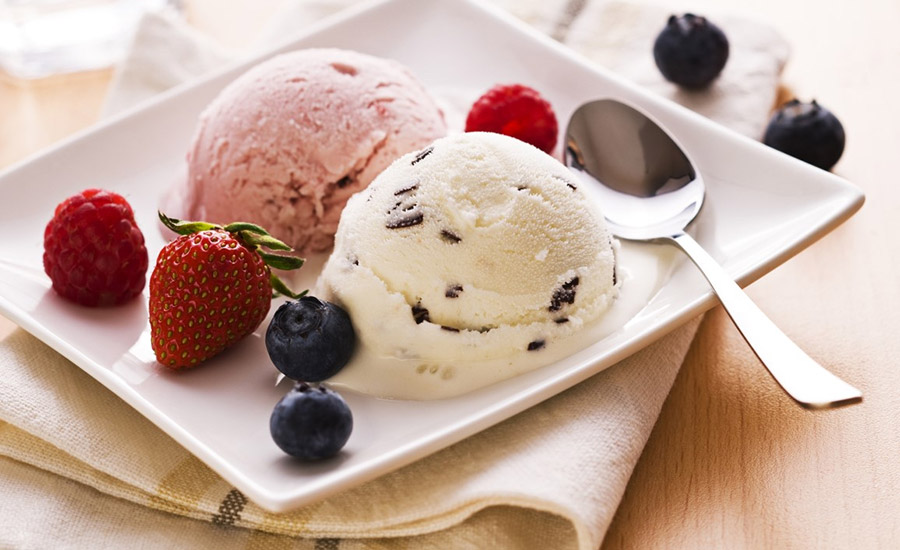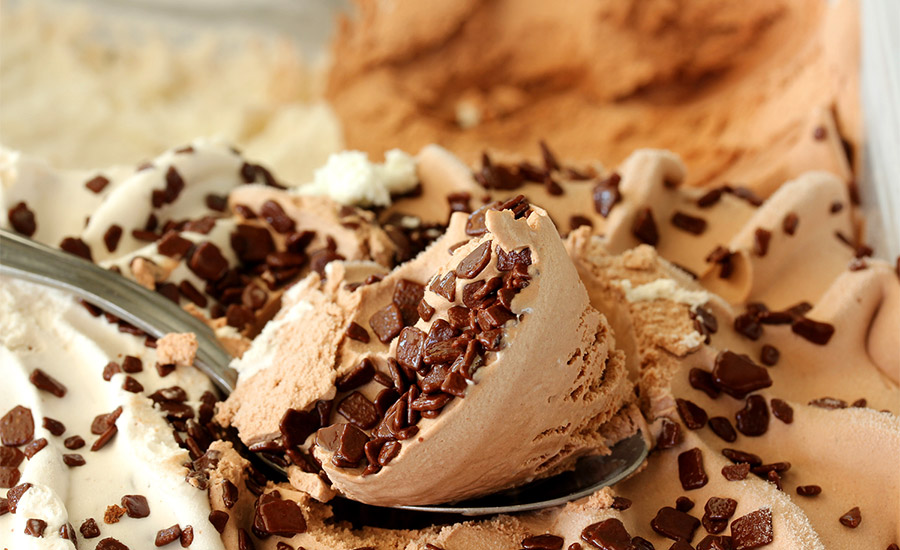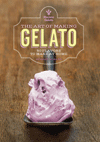All the latest about ice cream ingredients
Although health trends continue to get more publicity, indulgence is still in vogue.

ASR Group offers tagatose, an alternative to table sugar that has prebiotic properties and is ketogenic certified.
Photo courtesy of ASR group
The global ice cream market is expected to reach $91 billion in global retail sales by the end of this year. Volume growth is expected to expand at a compound annual growth rate (CAGR) of 5.7% for 2025, 2026 and 2027, respectively, according to Euromonitor.
Three-quarters of global consumers are excited about trying new ice cream experiences, according to research conducted by Barry Callebaut.
Ingredients are the key drivers of ice cream products, allowing consumers to indulge in many new flavor experiences. In fact, the hottest trends in ice cream include unique flavors like florals and botanicals and familiar flavors like bakery flavors, Shannon Fitzgerald, marketing manager, Balchem, Montvale, N.J., tells Dairy Foods.
“These flavors will bring nostalgia to one’s palette but also introduce exciting twists. More than 50% of U.S. Gen Z consumers would be motivated to purchase more frozen treats with baked good flavors,” Fitzgerald states, citing Mintel’s “Enhancing Consumer Experiences with Ice Cream” report.
Mike Hengelsberg, director, business development, Flavors and Functional Ingredients for Washington, Mo.-based Osage Food Products, adds indulgent, nostalgic flavors are hot, with consumers being cost-conscious in their purchases.
“Following the global trend in the cocoa markets, customers are seeking ways to extend their cocoa supplies while mitigating risk in that area. ‘Mash-up’ flavors are becoming more in vogue now. Combinations of ‘hot’ spices with sweeter caramel or fruit-based flavors are in trend,” he says.
Hengelsberg adds Osage is having success bringing traditional ice creams from other parts of the world to the U.S. market, with an example being Turkish Ice Cream with unique texture and ingredient qualities.
Jenn Adams, director of Ingredient Technology & Applications, IFPC, Fenton, Mo., also cites super indulgent, as well as real ingredients and limited-edition flavor profiles continue to drive customer purchases.
Alice Lee, technical marketing manager, Dallas, N.C.-based GNT USA LLC notes that despite a cost-of-living crisis, premium and super premium products are holding their share.
“Premium brands tend to use high quality, natural ingredients along with sophisticated and experimental flavor profiles that appeal to modern, adventurous consumers. That might mean spices and botanicals as well as flavors like ube, cucumber, whiskey and root beer,” Lee reveals. “As a color supplier, we work with our customers to identify the most effective way to showcase novel flavors visually.

“The color might be more subtle for a sophisticated flavor or more intense for a sweeter flavor,” she continues.”For products with unusual flavor combinations, this might involve eye-catching color combinations like purple with orange swirls for a blueberry habanero ice cream.”
Uber-indulgence is a huge trend and one Cargill has identified as a growth opportunity. “Consumers are drawn toward decadent flavors that signal premiumization, from double chocolate fudge to sea salt caramel brownie, eager to try combinations that promise to delight the senses,” says Danielle Benson, ice cream category leader for the Wayzata, Minn.-based company. “Rich, creamy textures, often interspersed with decadent inclusions, add to the overall experience, yielding a multi-sensorial experience that today’s consumers find impossible to resist.”
Indulgence versus health
It is difficult to argue consumers are more willing to forego diet trends when it comes to eating ice cream, especially compared to cultured dairy products.
“Sugar reduction isn’t happening broadly with ice cream innovation. In the 52 weeks through March 2024, only about 3% of new ice cream launches featured a low-sugar, no added sugar, or sugar-free claim,” relays Lisa Jackson, director of marketing, FlavorSum, Kalamazoo, Mich. and Mississauga, Ont.
“Sugar is essential to the texture and flavor of ice cream. Sucrose lowers the freezing point of the liquid base and helps create the soft, slightly thick, and creamy consistency we love. Without sugar, ice cream would be crystallized cubes of milk,” adds Sandra Wilson-Eamer, flavor development manager for FlavorSum.
There is definitely a market for reduced sugar and healthy ingredients, but from Pecan Deluxe’s perspective, “It still seems very niche and hasn’t gained the traction we thought it would two-plus years ago,” maintains Smokey Waters, director of culinary for the Dallas-based company. “We show less indulgent items and concepts, but the customers always come back to something that is decadent and comforting. Ice cream is traditionally used as an item to treat yourself and indulgence continues to be king and drive the market.”
Most of the formulation requests Fiberstar receives involve improving the creamy texture over shelf life or minimizing ice crystallization, Jennifer Stephens, vice president of marketing for River Falls, Wis.-based Fiberstar, notes. “These are typically in animal-based dairy or plant-based ice cream formats. The trends associated with health and wellness in the ice cream category tend to revolve around plant-based or natural ingredients. These appear to be healthier options. Though sugar reduction is a hot topic in other food categories, there have not been requests to improve texture in these type of products. Reduced sugar ice cream is a niche category,” she says.
However, that does not mean there is no future for reduced-sugar ice cream.
Corbion’s Insights Manager Megan Passman, says the Lenexa, Kan.-based company is seeing a push for reduced sugar and cleaner ingredients in the ice cream category.
“Ice cream is still mainly an indulgent product, although plant-based, reduced-sugar and added protein options continue to grow and improve,” adds IFPC’s Adams.
Thom King, CEO and chief food scientists at Portland, Ore.-based Icon Foods, states reduced sugar and better-for-you options are still trending. “With frozen desserts, inclusions can add significantly to the added sugar. We’re seeing an uptick in demand for low or no-sugar inclusions, such as chocolate flavored chips and sprinkles, as an easy way to reduce overall sugar. Homemade ice cream is also seeing a revival, especially as a way to make a healthier version with frozen fruit or by adding protein powder,” he says.
Market research from Innova states that more than one in four consumers globally choose healthier alternatives for desserts and ice creams.
“When it comes to the term ‘healthier,’ there is not a one-size-fits-all approach. For more than one in three global consumers, the use of more natural/less artificial ingredients make a food healthier. With weight management being the No. 1 health concern in the U.S., there’s a clear demand for the reduction of ingredients such as sugar and fat when talking about better/healthier food options,” suggests Juliana Hirata, area sales manager North America and Canada at BENEO, Parsippany, N.J.

ASR Group notes some dairy processors are catering to the “better-for-you” trend. “Numerous brands highlight calorie content on the front of their packaging and claims of ‘keto’ or ‘low carb’ are common in new product introductions within the category,” the West Palm Beach company reveals.
Matt Hettlinger, technical sales manager, Ingredients, Cultures and Enzymes, Nelson-Jameson, Marshfield, Wis., notes the market is still strong for indulgent products, but he points to keto-friendly as a growing trend, as well “low-sugar, lactose-free, and plant-based all have more options than ever. The quality of these products has increased, so these options are attracting customers who may not have considered them before.”
Phil a’Becket, senior consumer insights manager, FlavorSum, stresses that “longer term, sugar reduction may increase in prominence, via newer sugar alternatives like allulose and monk fruit, but this comes with significant formulation challenges.”
Meeting market demands
Ice cream suppliers have introduced several ingredients intended for ice cream, some of which can certainly be beneficial to dairy processors. Balchem points to its Caramel Apple Pie, which recently placed second in IDFA’s Most Innovative Prototype Ice Cream Flavor contest. Bringing in the bakery trend, this ice cream utilized an apple pie flavor base, rich caramel variegate, and a fried pastry flavored variegate.
Another recent Balchem ingredient introduction includes a Spicy Blood Orange variegate. “Unique and different from our popular Hot Honey variegate, the Spicy Blood Orange variegate uses turmeric and ginger spice notes versus the in-your-face heat of cayenne peppers,” Fitzgerald states.
GNT USA recently expanded its portfolio of plant-based EXBERRY colors to include carotenes. “Our EXBERRY Carotene products are made from the saltwater algae Dunaliella Salina and can be used to deliver attractive yellow shades in ice cream with flavors including vanilla. It allows for low dosages and supports low cost-in-use with no impact on flavor. It can be listed on the label as ‘Beta Carotene (color),’ Lee notes.
Fiberstar offers Citri-Fi citrus fiber, which is produced from byproducts of the citrus juicing process, and is able to provide thickening, creaminess, and emulsification in ice cream products, intended to make better tasting frozen desserts. “Because of its composition of both soluble and insoluble fiber, Citri-Fi has a pleasant texture and is also able to withstand heat and challenging processing conditions,” relays Brock Lundberg, Ph.D., chief science officer for the company.
Cargill’s portfolio of ingredients includes its portfolio of ViaTech and EverSweet, intended to help brands reduce sugar, while providing a clean rounded flavor. “Then, to address bulking and freezing point depression, we recommend Zerose erythritol, which can help fill those functional gaps,” Benson says. “We have answers for customers eyeing the plant-based frozen dessert space too, including those aiming for higher protein ice creams. The latest additions to our pea protein line-up allow us to achieve higher levels of protein thanks to enhanced solubility and improved flavor profile.”
Cambridge, Mass.-based Global Organics’ Organic Agave Inulin powder can act as a prebiotic, promoting the growth of beneficial gut bacteria for improved digestion, nutrient absorption, and reduce the risk of gut-related ailments, maintains Ravi Arora, the company’s sales and marketing director.
“The use of agave inulin powder can help ice cream and other dairy manufacturers decrease sugar content while simultaneously increasing the presence of dietary fiber on the product label.”
Corbion’s SMART Freeze can be used in ice cream, frozen desserts, or frozen yogurt. “This solution works in many ways: to correct overrun, target viscosity and texture, improve the consumer eating experience, and more,” says Drew Wunderly, senior scientist.
BENEO’s faba bean protein concentrate (BeneoPro FB P60) is a plant-based alternative to animal proteins and other plant proteins, which is high in protein. “It scores with its technical properties such as a good solubility as well as very good emulsifying properties. The ingredient has proven well in various dairy-free applications such as plant-based desserts and dairy alternative drinks and is also well suited to act as an emulsifier in ice cream,” Hirata states.
Also, its Orafti Inulin owes its suitability as a fat substitute to its long-chain molecular structure and low solubility and its chicory root fibers can be easily used in many applications, the executive adds.
Icon Foods’ new Flavor Bitz inclusions are small morsels (about 5mm) made with stevia, erythritol, fibers, and natural flavors available in natural Mint Chocolate, Strawberry, Peach, Blueberry, and Cinnamon Dolce flavors. They make excellent inclusions in ice cream for adding flavor and color without added sugar, King explains.
Icon Foods’ SweetBitz line of no-added sugar inclusions is constantly expanding with new options for chocolate flavored chips, white chocolate chips, multicolored sprinkles and we recently introduced a high protein, no-added-sugar dark chocolate flavored chip that is sweetened with erythritol and includes whey protein concentrate.

While inulin and soluble tapioca fiber are not new ingredients, but they are being used in newer ways, King notes. “Ice cream often includes carrageenan, which is associated with inflammation, food allergies, and IBS. Manufacturers that have been using carrageenan as a hydrocolloid, are now opting for locust bean gum, guar gum, or replacing it with a combination of inulin and soluble tapioca fiber,” he adds. ““Inulin and soluble tapioca fiber work incredibly well, or better, because of gelling capabilities: soluble tapioca fiber adds viscosity without a slimy mouthfeel.”
ASR Group offers tagatose, an alternative to table sugar that has prebiotic properties (at 5 gm/serving) and is Ketogenic Certified. “In ice cream, it can replace sucrose to produce a creamy, great-tasting product with fewer calories,” states Jim Kappas, vice president of Specialty Ingredients.
Commodity impacts
As noted, sustainability will be tomorrow’s focus as well. “Sustainability, including reduced carbon footprint and eco-friendly practices, will definitely shape and mold the ice cream ingredient market in the future,” Fiberstar’s Stephens suggests. “More food companies each year are requesting more information about ingredient supplier’s sustainability practices.”
“BENEO believes that the trend to indulge consciously is going to grow, with ‘consciousness’ having several facets. “On the one hand, it is about awareness toward one’s health as well as toward our planet. Hence, the quest for improved nutritional labels and ingredients as well as the production process of the foods being more sustainable will be evolving,” Hirata predicts.
Beyond sustainability, ingredient suppliers expect several other trends to affect the ice cream market. One big future factor could be commodity prices. “We tend to talk about all the natural, gluten-free, and special certification products, but that’s really drives cost on top of the actual availability,” Pecan Deluxe’s Waters stresses. “The consumer is just not willing to take that on that extra cost on a regular basis when the prices for traditional products are already rising at a steady rate.”
Osage Food Products’ Hengelsberg also expects commodity prices to have an impact. “The cocoa market is a very large disrupter, currently. Just at the time that we’ve seen our customers introducing more and more chocolate-based flavors in the market, the cocoa supply seems to be tightening significantly. With ongoing supply issues that all indications show continuing for quite a while, we’re now seeing customers seeking replacement or extensions of their current cocoa, and changes to their product line-up to consolidate their chocolate products,” he reveals.
Changing trends
Beyond commodity prices, the “ongoing innovation of unpredictable ice cream flavors that capture attention and intrigue consumers is creating new opportunities for ice cream manufacturers,” says Christine Cambell, category manager of Fruits and Vegetables for Global Organics. “For instance, take the concept of ‘Golden Milk’ and apply it to ice cream to make a Golden Milk Ice Cream made with turmeric and candied ginger, ingredients which have numerous health properties.”
The ice cream space is becoming highly customized, adds Cargill’s Benson. “Consumers are looking for innovations, creative flavors and enticing texture combinations. Brands are responding with multiple product iterations and need ingredient suppliers like Cargill who can keep pace with customized ingredient blends that meet their needs,”
Benson adds Cargill expects continued slow growth in the plant-based ice cream segment. “As ingredient suppliers like Cargill bring forward advanced plant proteins and ‘smart fat’ solutions, vegan ice creams will close the indulgence gap with their traditional dairy counterparts.”
Indulgence will always be there, but both gut health and diet claims are sure to have an impact — even on ice cream products — moving forward. According to Innova Market Insights, “prebiotic” is the fastest-growing active health claim on new products in indulgent categories,” ASR Group’s Kappas maintains. “Surprisingly, while yogurt brands have embraced this trend by incorporating prebiotics and probiotics, the ice cream industry has yet to fully seize the opportunity. This presents a promising path for ice cream manufacturers to explore, mirroring the success seen in other categories like yogurt.”
If manufacturers can increase the nutritional density of a frozen dessert (such as high protein and fiber) it can appeal to the more health-conscious market, Icon Foods’ King adds. “Overall, people are eating less. And that trend will continue especially as we see GLP-1 agonists become more affordable and more available to the general population,” he says. “Frozen dessert could target that particular market as long as it’s nutrient dense and has no added sugar.”
Do not forget “consumers’ best friend:” protein. According to FlavorSum, younger generations are more willing to try energy-boosting ice cream: 23% of 18–34-year-olds would try ice cream with energy-boosting ingredients versus 15% of all adults.
“Recent products that refer to energy-boosting properties are either enriched with vitamins such as vitamin B12 (which contributes to normal energy metabolism) or contain caffeine,” Jackson concludes. “Protein ingredients are becoming more popular in Europe, with 33% more launches featuring a protein claim in the last year. North American brands pulled back on protein innovations. With protein-enriched ice cream, communicating the link between protein and longer-term energy is vital.”
SIDEBAR
Clean living
Sustainable and clean-label ice cream ingredients are a goal for ingredient suppliers both today and tomorrow. “Besides alternative ingredients for plant-based ice creams, there is an effort to examine the frozen food chain and how that can be changed to be more sustainable over time,” states Hettlinger. “Can ice creams still maintain quality at higher storage temps to reduce overall energy consumption? Several companies are working on alternative formulations to tackle this pressing issue.”
There is an increasing emphasis on planetary health, stresses Arora. “Consumers are more conscious of the environmental impact of all their food choices, including ice cream. Regenerative agriculture is gaining traction, with a quarter of global consumers actively seeking dairy products that support regenerative farming,” he says, citing Innova’s "Dairy Trends and Dairy Alternatives: Global Impact” report.
“One example of this movement is Alec’s Ice Cream, which uses Regenerative Organic Certified (ROC) cane sugar sourced through Global Organics in partnership with Native, a leader in the Green Cane Project. Additionally, they source ROC-certified bananas, coffee, maple and almonds, and use Land to Market Verified regenerative organic dairy,” Arora adds.
Stephens adds clean label and plant-based are key ingredient trends. “Ice cream makers are seeking natural emulsifier and stabilizer ingredients due to the clean food movement. These ingredients not only are from natural sources but have the ability to fully replace additives while maintaining a clean label,” she notes. “Another hot spot is plant-based ice creams. These frozen dessert producers are working with a variety of plant bases including oat and almond that require stabilizers and emulsifiers like their animal dairy counterparts.”
Sustainability encompasses more than ingredients; it also carries into the manufacturing sector, Wunderly stresses. “When a manufacturer is making millions of pounds of product, just a fraction of waste can be a huge amount. Ingredients that increase processing tolerance also affect sustainability by improving the ease of manufacturing,” he says.
Regarding specific company practices, “Sustainability is a key priority for GNT as a company and we’ve set out 17 targets for 2030 to optimize our environmental and social impacts,” Lee asserts. “These include training our farmers in sustainable agriculture, promoting 10 biodiversity projects, and cutting the environmental footprint for EXBERRY product ranges by 25% over the course of the decade.”
Osage Flavors has been developing a line of ice cream ingredients that meet customer needs. “Whether it is a plant-based, kosher Pareve caramel or a clean-labeled dairy-based ice cream, Osage has been hard at work designing products to fit our customers’ needs,” Hengelsberg notes.
Fiberstar have been inventing new products and process technologies over the years that convert fibrous plant raw materials into value-added food ingredients that provide improved taste and texture, Dr. Lundberg reveals. “By design, these Citri-Fi citrus fiber products are created from byproduct of the citrus juicing process. These upcycled ingredients allow manufacturers to use clean-label ingredients that are sourced and manufactured sustainably.”
BENEO can cite several examples of sustainability of its ingredients. One example can be found at its production site in Pemuco, Chile. “There, a 90 million Euro investment was done to ensure that supply security and sustainability go hand in hand. While increasing global capacity for its prebiotic chicory root fibers by 30%, it is reducing specific energy consumption by 35% at the same time,” Hirata says.
ASR Group offers a wide variety of ROC products from Florida Crystals, Florida’s largest organic farm. “Florida Crystals goes beyond organic and sustainable farming methods to operate more in tandem with nature. As a leader in regenerative agriculture, we focus on building a balanced ecosystem resulting in healthy soil, more carbon drawdown, and greater biodiversity,” Kappas states.
Looking for a reprint of this article?
From high-res PDFs to custom plaques, order your copy today!










